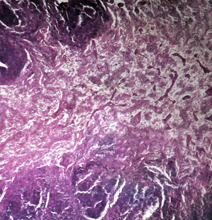Environmental exposure
The colon’s main function is to absorb water, mineral salts and vitamins while collecting the food residues rejected by the body to be purged. Among these are toxic and carcinogenic materials, potentially dangerous to the organism.
While the colon and the rectum ensure that these substances are eliminated from the body, the cells covering the inside of the intestine (its lumen) are exposed to them, increasing their chance of tumors.
Toxic and carcinogenic substances can trigger mutations (abnormalities in the DNA), and occasionally these lead to malignant (cancerous) changes in the cells. This is the reason why colorectal cancer develops typically from cells of the mucosa, the epithelial tissue that covers the inside of the intestine





